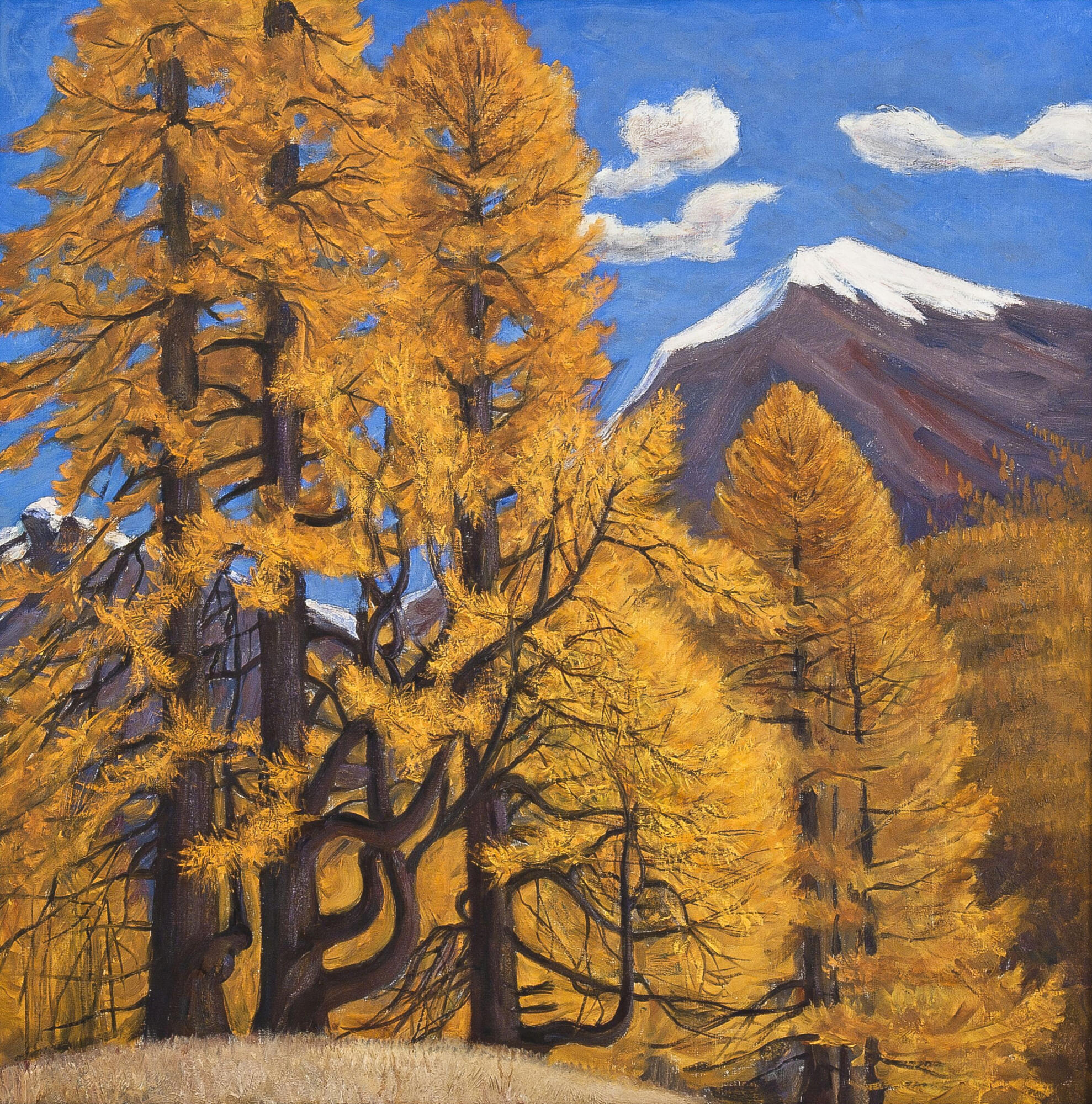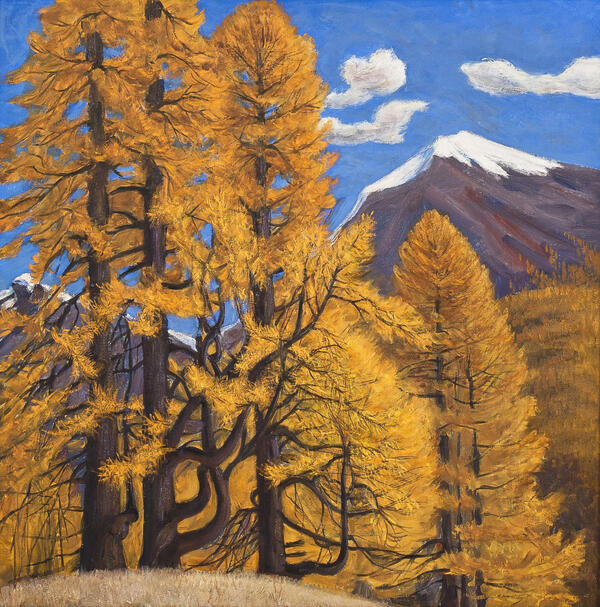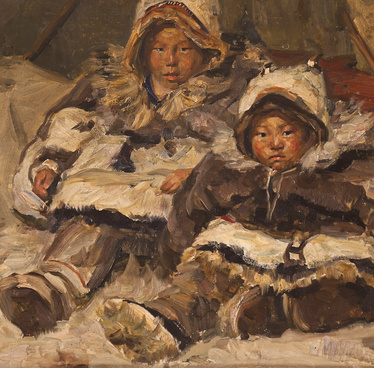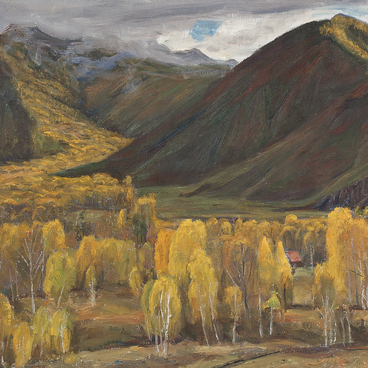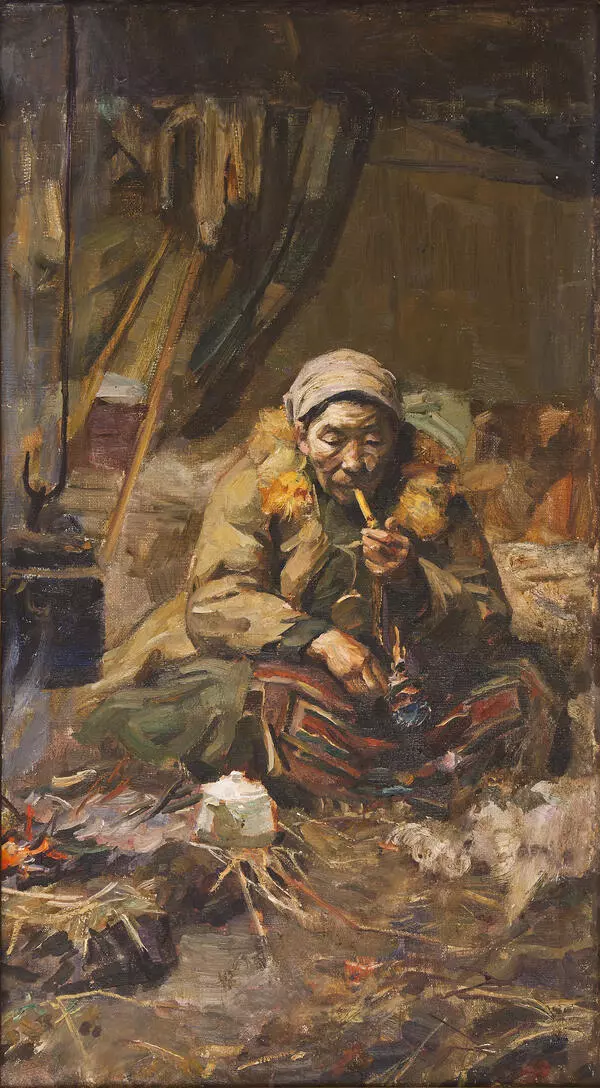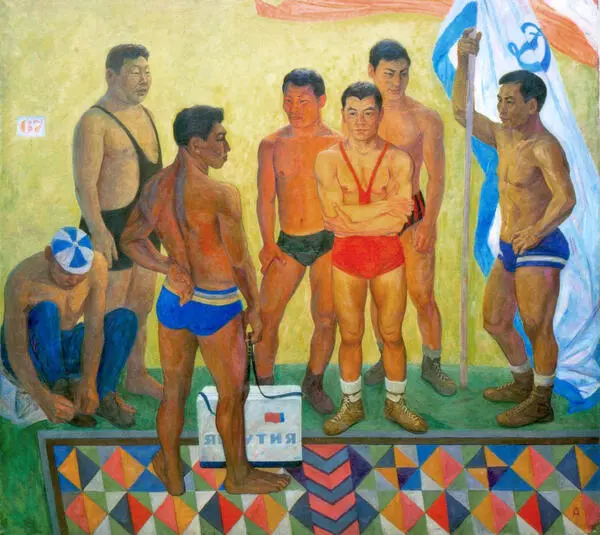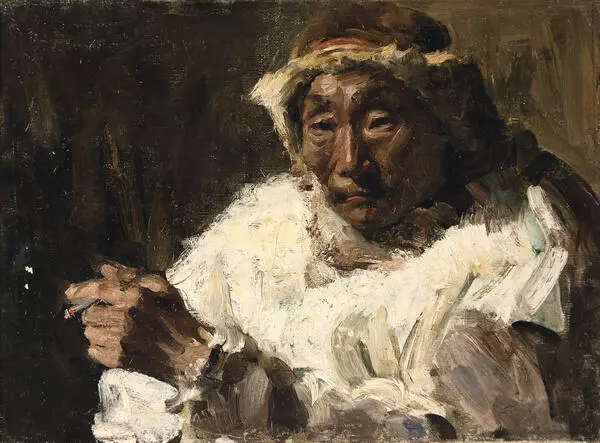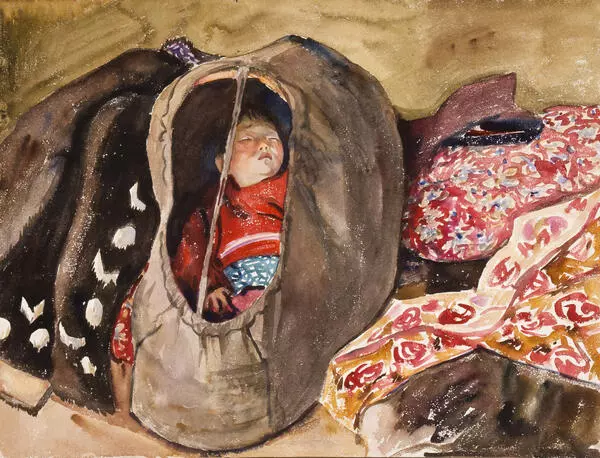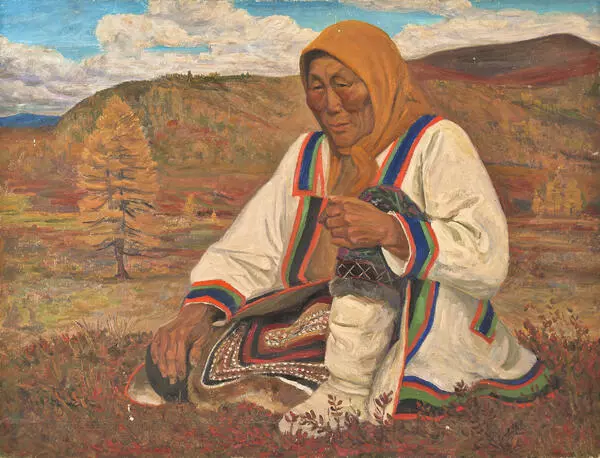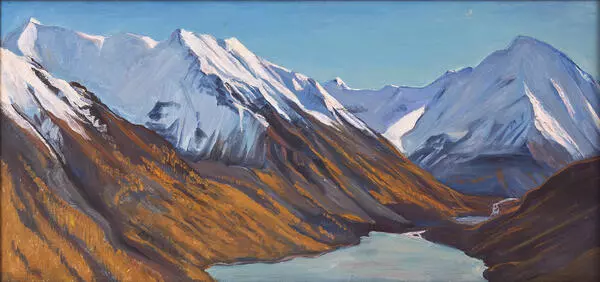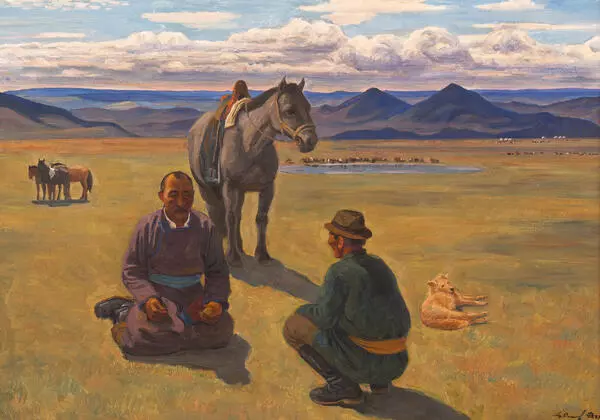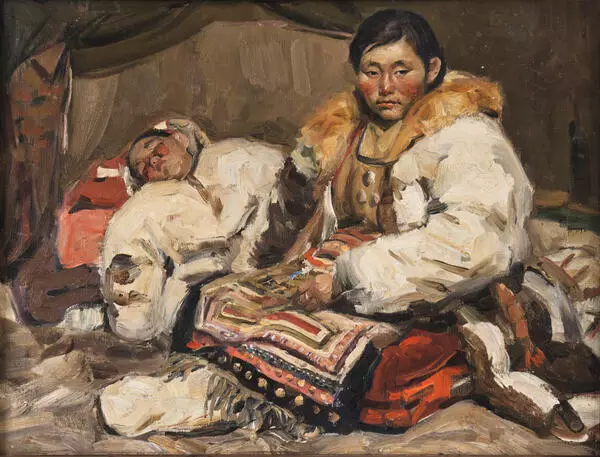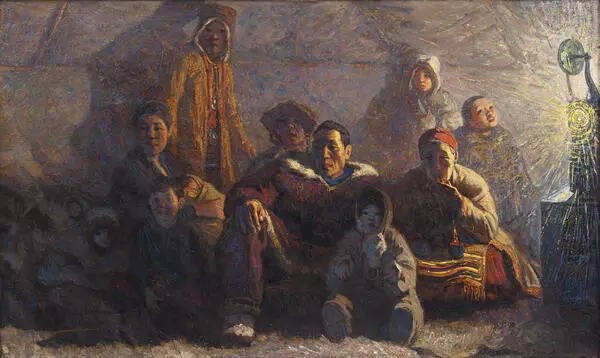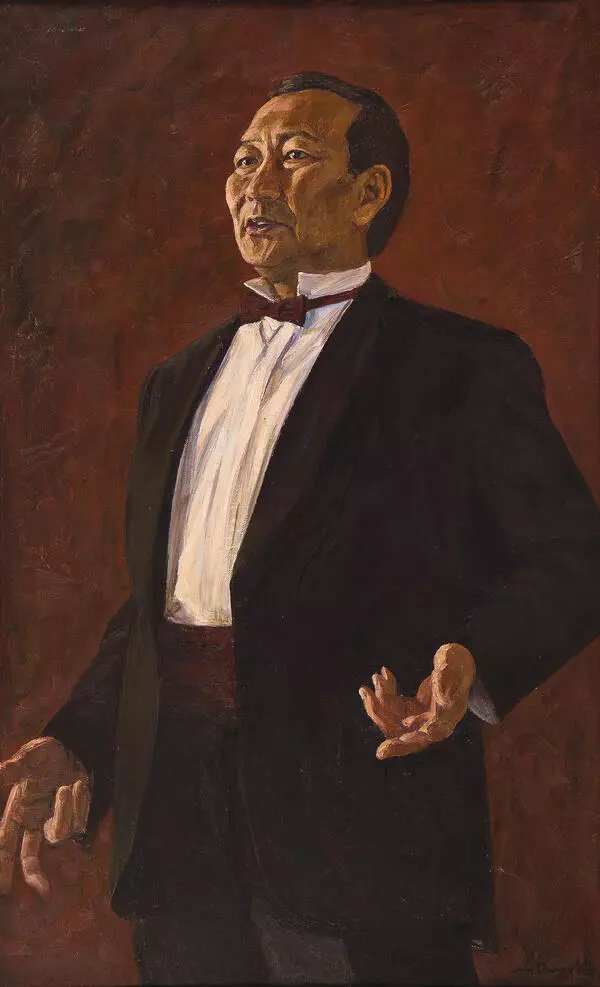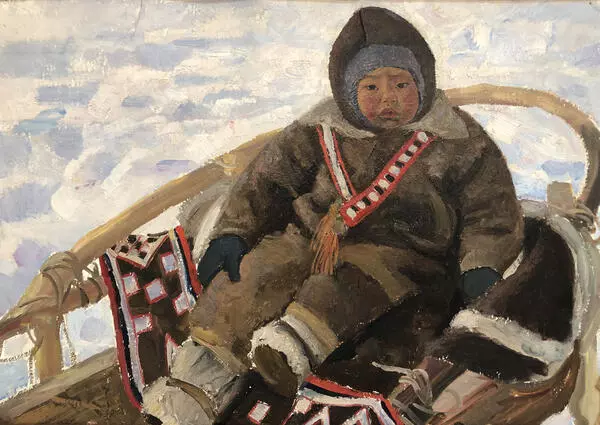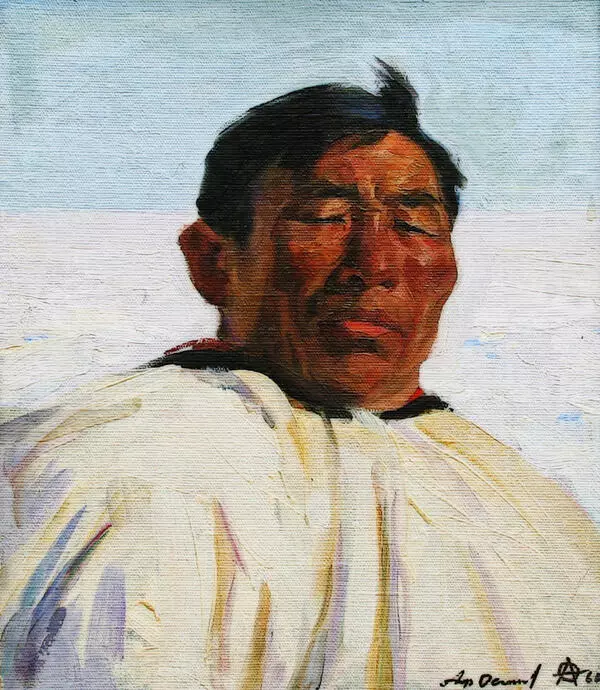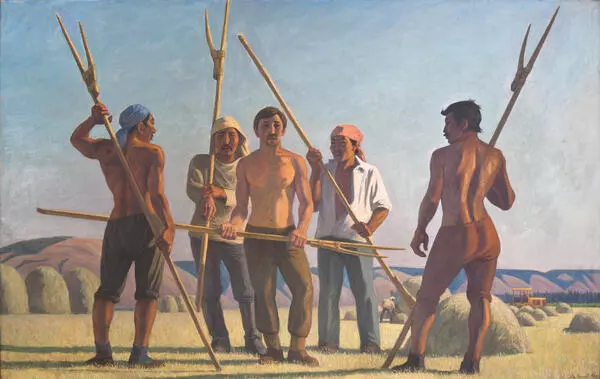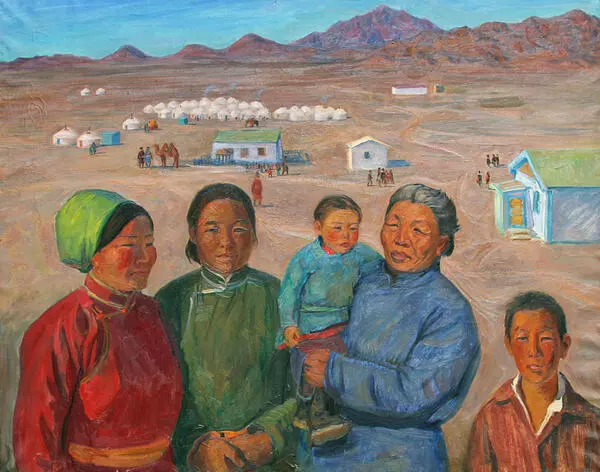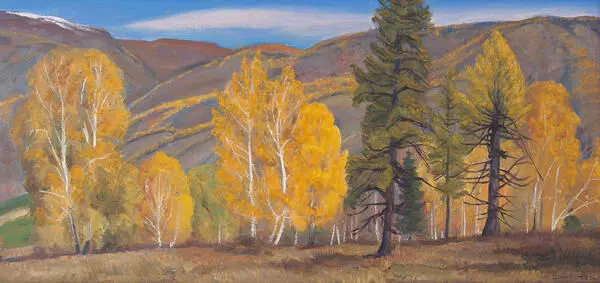The exhibition ‘Art World of Afanasy Osipov’ in the National Art Museum of the Republic of Sakha (Yakutia) introduces visitors to the work of this Yakut painter. Afanasy Osipov was born on February 28, 1928 in Gorny Ulus in Yakutia. After finishing school and technical school, he went to Moscow. There he studied painting at the art school, and then at the Surikov Moscow State Academic Art Institute. The works of the artist Afanasy Osipov are kept not only in the National Art Museum of the Republic of Sakha (Yakutia), but also in the State Tretyakov Gallery, the State Russian Museum, and in private collections in Russia and abroad.
The work of the Yakut painter is connected with cultural traditions in the modern world. Yakutia, Mongolia, Kyrgyzstan, Buryatia, Altai, and the Himalayas appear in the artist’s paintings as a majestic and beautiful world of steppes and mountains, which preserves the secrets of the birth and migration of the ancient peoples of Asia. Throughout his career, Osipov created works, each time using a new method. Some works trace his ability to transmit mountains or parts of mountains from below, and this further increases their power. One of these paintings is the canvas “Ancient Masters of the Peaks”.
The masters here are century-old trees that are located on the mountains near the snow-capped peaks. They are similar to the Yakut mythological sacred tree Aal-Luuk Mas, i.e. the Great Giant Tree. Among the Yakuts, it is a symbol of the trinity of the world. According to the Yakut religion, the world consists of three parts, namely: the Underworld where evil spirits live, the Middle World where the people live, and the Upper World, which is the abode of the supreme deities. The crown of Aal Luuk Mas symbolizes the Upper World, the trunk - the Middle World, and the roots - the Underworld.
The golden hue of the foliage of these “ancient inhabitants” combined with the cold azure color of the sky create the effect of coolness and crystal-clear mountain air. The fiery autumn that covers the Altai forests is an integral part of Afanasy Osipov’s mountain landscapes. Thanks to the ‘bottom-up’ angle, the inconspicuous black mountain looks distant, high, inaccessible, and powerful.
The work of the Yakut painter is connected with cultural traditions in the modern world. Yakutia, Mongolia, Kyrgyzstan, Buryatia, Altai, and the Himalayas appear in the artist’s paintings as a majestic and beautiful world of steppes and mountains, which preserves the secrets of the birth and migration of the ancient peoples of Asia. Throughout his career, Osipov created works, each time using a new method. Some works trace his ability to transmit mountains or parts of mountains from below, and this further increases their power. One of these paintings is the canvas “Ancient Masters of the Peaks”.
The masters here are century-old trees that are located on the mountains near the snow-capped peaks. They are similar to the Yakut mythological sacred tree Aal-Luuk Mas, i.e. the Great Giant Tree. Among the Yakuts, it is a symbol of the trinity of the world. According to the Yakut religion, the world consists of three parts, namely: the Underworld where evil spirits live, the Middle World where the people live, and the Upper World, which is the abode of the supreme deities. The crown of Aal Luuk Mas symbolizes the Upper World, the trunk - the Middle World, and the roots - the Underworld.
The golden hue of the foliage of these “ancient inhabitants” combined with the cold azure color of the sky create the effect of coolness and crystal-clear mountain air. The fiery autumn that covers the Altai forests is an integral part of Afanasy Osipov’s mountain landscapes. Thanks to the ‘bottom-up’ angle, the inconspicuous black mountain looks distant, high, inaccessible, and powerful.
